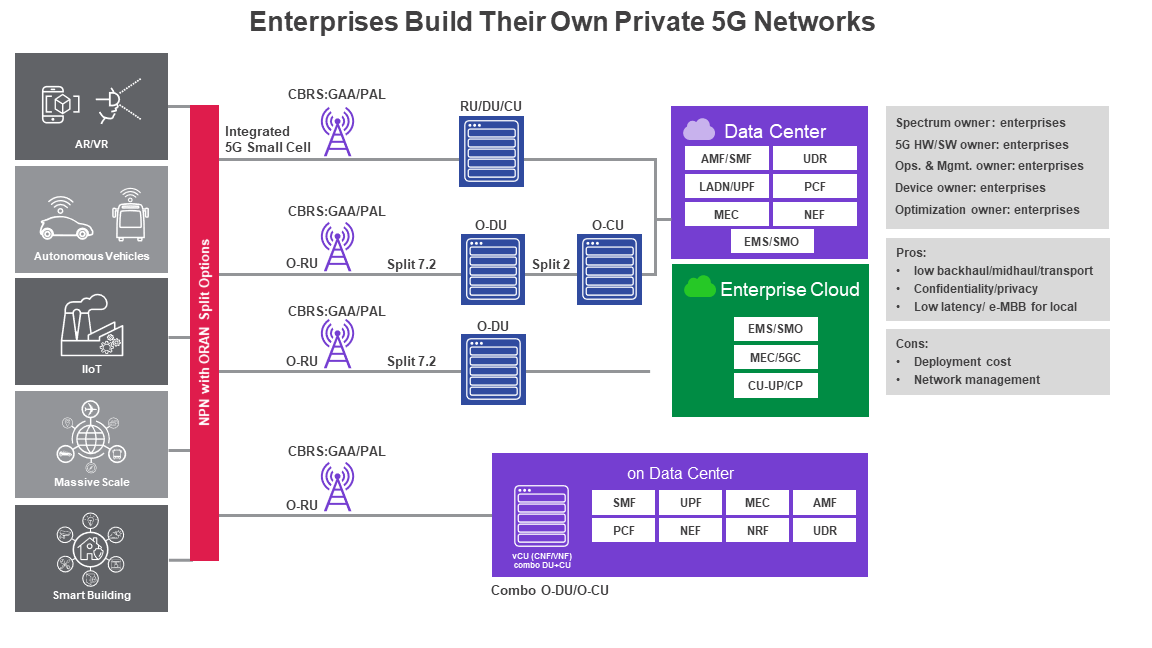Standalone and the 5G Private Network Opportunity
As these examples indicate, cellular service with premium quality of service is now no longer dependent on the larger nationwide mobile operators. Instead, small players like local wireless Internet service providers (WISPs) and others could deploy their own CBRS network and then work to attract a larger known telecom partner to share spectrum costs through a roaming partnership. In this scenario, the business case for a private network would be feasible, but which private network model should they deploy? We will look at the options, including Open RAN, that are available to enterprises in the rest of this article.
Non-public networks
3GPP, the industry organization that oversees the development of cellular telecommunications technology specifications, issued Release 16, which introduced the first new architectural model to address such demand in private 5G: the non-public network (NPN). There are two NPN deployment types as defined in 3GPP TS 23.501 V16.3.0/TS 22.261:- Public Network Integrated Non-Public Network (PNI-NPN)
- Stand-alone Non-Public Network (SNPN)
PNI-NPN is deployed in association with a public land mobile network (PLMN)/3GPP-based network. Nationwide mobile operators prefer this option so that their indoor solutions can have seamless and lossless session transfers to and from their macro-centric network. WISPs or local providers may adopt PNI-NPN (requires service level agreement with nationwide mobile operators) for dynamic services like telematics, asset tracking, and more.
On the other hand, SNPN is designed for a fully independent entity and does not rely on PLMN/3GPP-based networks. This option is most favorable for WISPs in Industrial IoT, local school districts, small to medium businesses and more. There is a limitation here, however; E911 services, roaming, mobility among SNPNs or between SNPN or PNI-NPN are not supported. Such networks can be identified by the combination of a PLMN ID and network identifier (NID – optional information in a human-readable network name). A 5G RAN can support broadcasting up to twelve NIDs.
SNPN Deployment Models
There are two SNPN deployment models that can be considered: a non-shared form of SNPN and a shared infrastructure model of SNPN.

Figure 3: Enterprises building private 5G networks
click to enlarge
Non-shared form of SNPN: in this deployment model, enterprises use their own infrastructure-like CBRS unlicensed spectrum and their own hardware and software for all network functions (RAN, core, gateway, and edge processors) within their premises. Service providers’ new radio (NR)-RAN/5GC will be configured with a combination of PLMN ID and NID to uniquely identify their device.
To maintain confidentiality and low latency, enterprises prefer to have analytics and processors at the far edge, and local user plane function (UPF) on-premises or local area data networking (LADN) topology. However, each network node’s placement in a



















